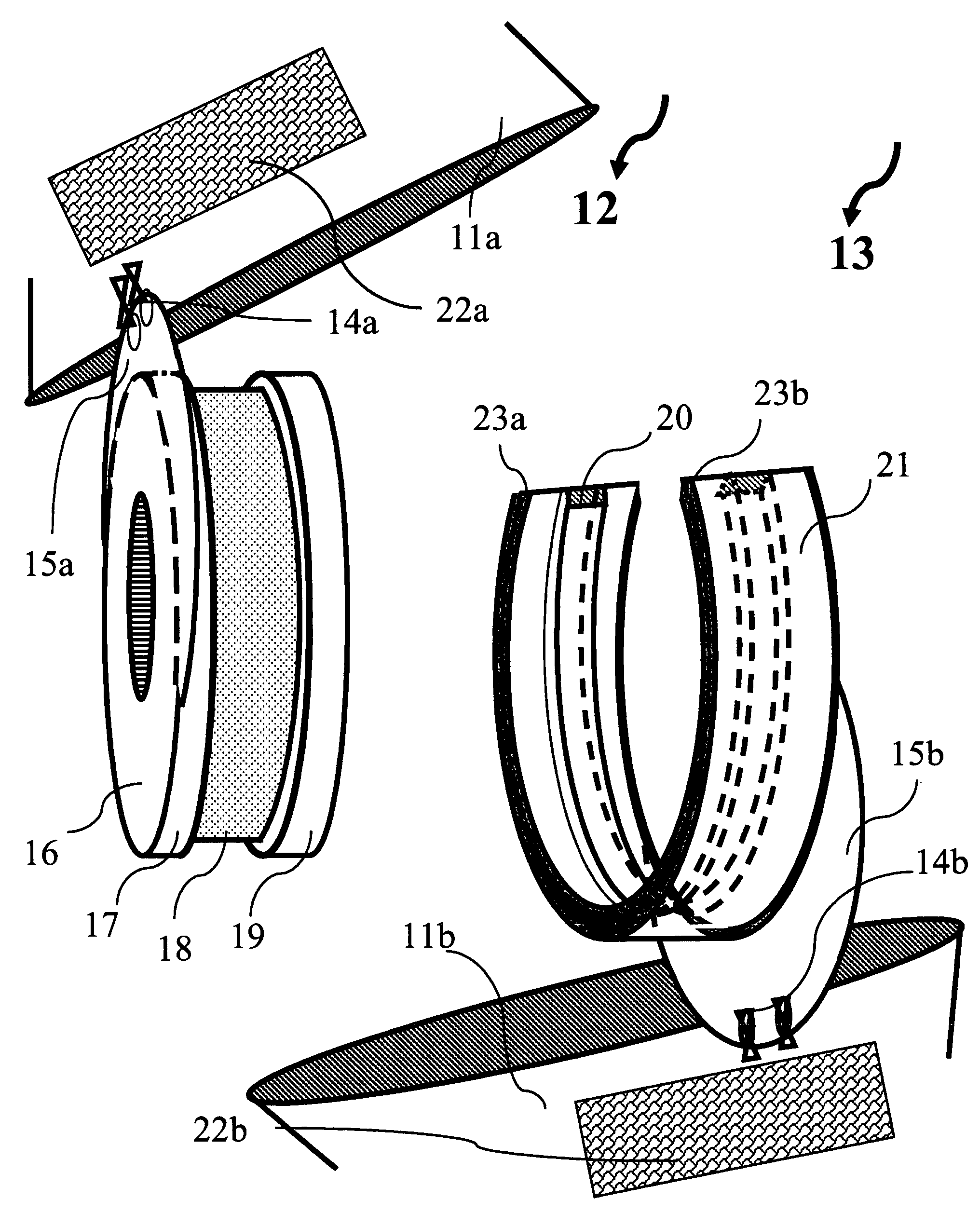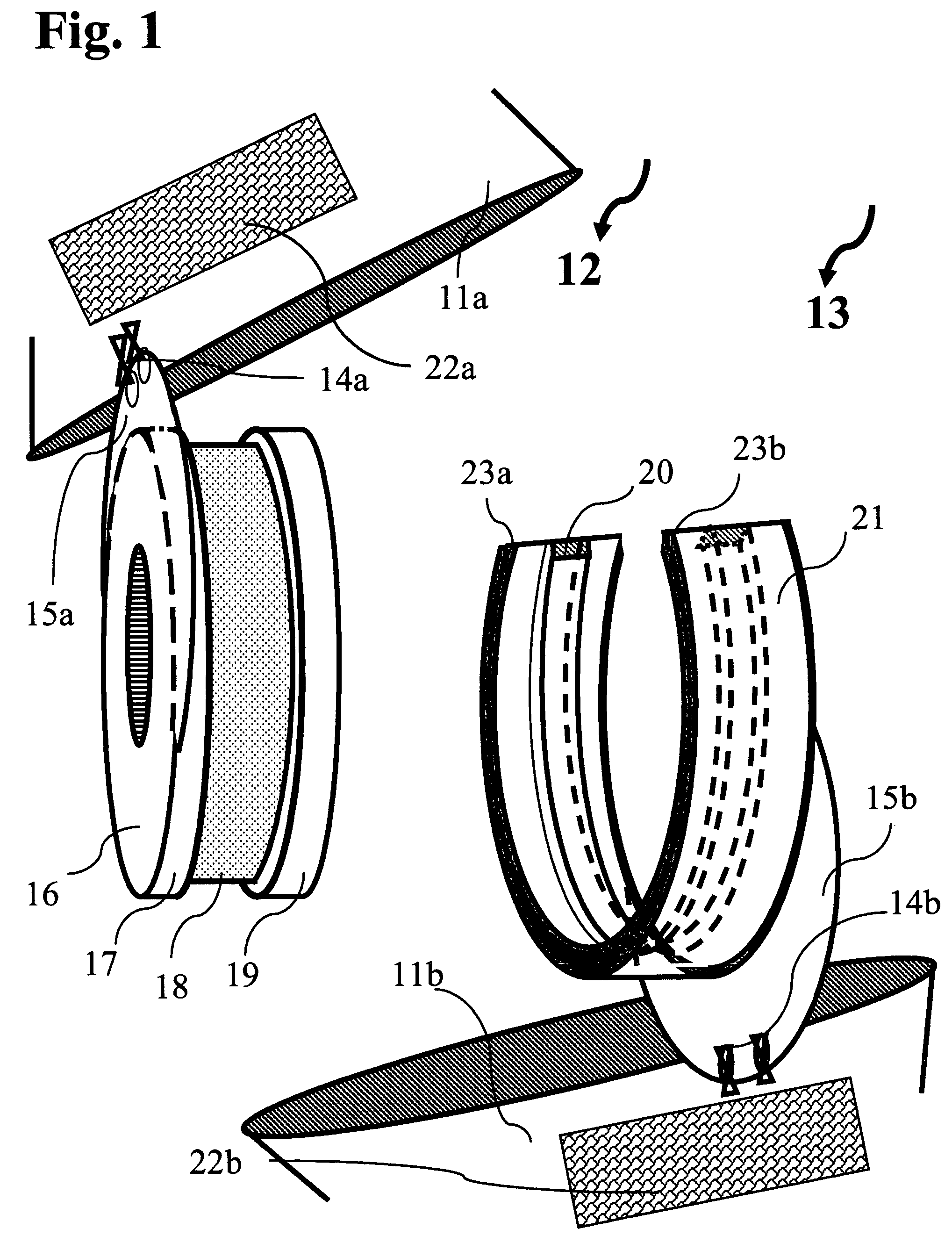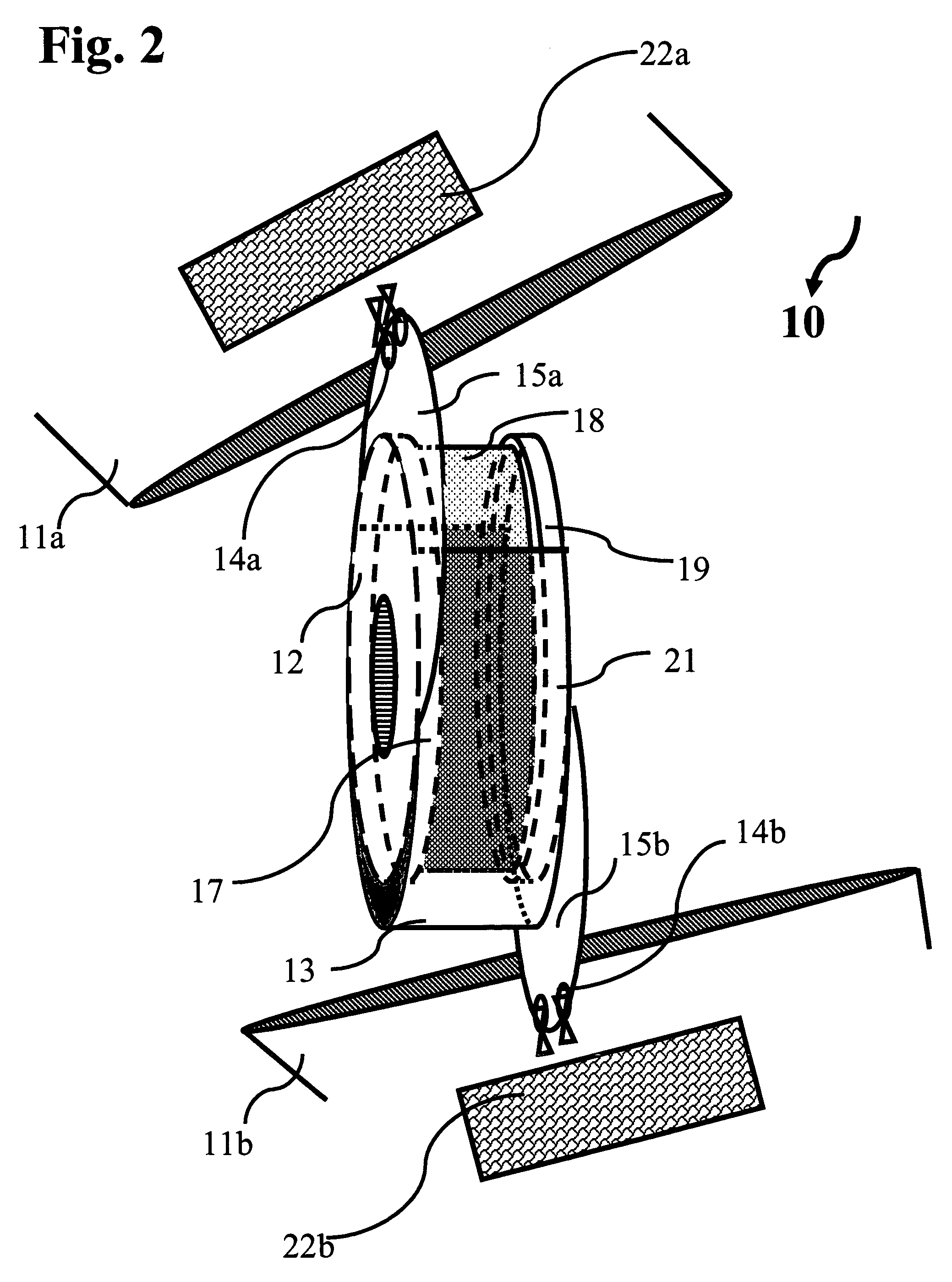Fastener mechanism for uniting articles of clothing
a technology for fasteners and clothing, applied in the direction of buckles, other accessories, insoles, etc., can solve the problems of affecting the service life of consumers, etc., and achieves the effects of high reliability, convenient and safe use, and convenient us
- Summary
- Abstract
- Description
- Claims
- Application Information
AI Technical Summary
Benefits of technology
Problems solved by technology
Method used
Image
Examples
Embodiment Construction
[0044]This invention provides for a fastener mechanism that temporarily unites articles during laundering, use, and / or storage. The fastener mechanism is inexpensive to construct, easy to use, comfortable and safe to wear, and highly reliable in operation.
[0045]Generally stated, the fastener mechanism comprises a first fastening component having a disc-shaped member that interlocks with a second fastening component having a unshaped aperture member. An appending member is located on both the first and second fastening components for attaching the fastener components to the articles of clothing so that the fastening components are suspended from the article as opposed to flush attachment.
[0046]Advantageously, this attachment configuration forms a flexible point (i.e. at the attachment point) so that the first and second fastener components are flexibly attached to the first and second articles. When the articles are clothing, during laundering, this flexibility promotes dissipation o...
PUM
 Login to View More
Login to View More Abstract
Description
Claims
Application Information
 Login to View More
Login to View More - R&D
- Intellectual Property
- Life Sciences
- Materials
- Tech Scout
- Unparalleled Data Quality
- Higher Quality Content
- 60% Fewer Hallucinations
Browse by: Latest US Patents, China's latest patents, Technical Efficacy Thesaurus, Application Domain, Technology Topic, Popular Technical Reports.
© 2025 PatSnap. All rights reserved.Legal|Privacy policy|Modern Slavery Act Transparency Statement|Sitemap|About US| Contact US: help@patsnap.com



